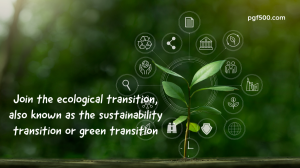Sustainable business models are strategies that aim to minimize negative impacts on the environment while also generating long-term economic value.
.
These models focus on integrating sustainable practices into core business operations, supply chains, and product/service offerings.
.
To turn your company green and adopt a sustainable business model, consider the following steps:
1. Conduct a #sustainability assessment: Assess your company’s current environmental footprint, including energy and resource usage, waste generation, and emissions. Identify areas where improvements can be made.
.
2. Set clear sustainability goals: Establish specific, measurable, attainable, relevant, and time-bound (SMART) goals to guide your sustainability efforts. These goals can include reducing carbon emissions, minimizing waste, or increasing the use of renewable energy sources.
.
3. Incorporate sustainable practices: Integrate sustainability into your company’s operations, processes, and culture. This may involve implementing energy-efficient technologies, adopting waste reduction and recycling programs, or encouraging sustainable behavior among employees.
.
4. Engage stakeholders: Involve employees, customers, suppliers, and the local community in your sustainability initiatives. Encourage their participation and gather feedback to ensure your green efforts align with their expectations and needs.
.
5. Evaluate and improve your supply chain: Assess the sustainability practices of your suppliers and consider partnering with those that share your commitment to environmental responsibility. Opt for sustainable sourcing and consider factors such as fair trade, ethical labor practices, and reduced transportation emissions.
.
6. Innovate and develop sustainable products/services: Explore opportunities to create eco-friendly products or services that align with market demand for sustainable solutions. Consider using recyclable materials, reducing packaging waste, or providing energy-efficient options.
.
7. Measure and report progress: Regularly monitor your sustainability performance and track progress towards your goals. Transparently communicate your achievements and challenges to stakeholders through sustainability reports, demonstrating your commitment to green practices.
.
Remember that transitioning to a sustainable business model is an ongoing process. Continuously assess, adapt, and improve your practices to align with evolving environmental standards and customer expectations.
.
pgf500 Team
.
..
~~~




